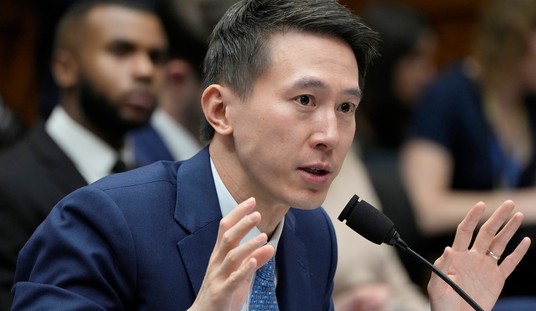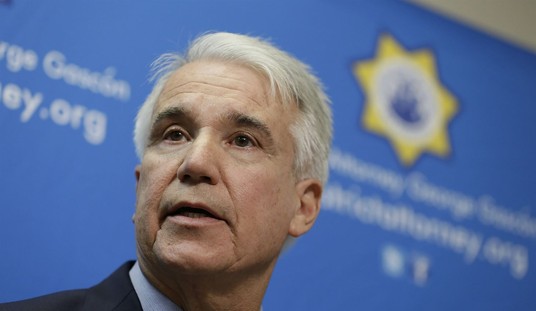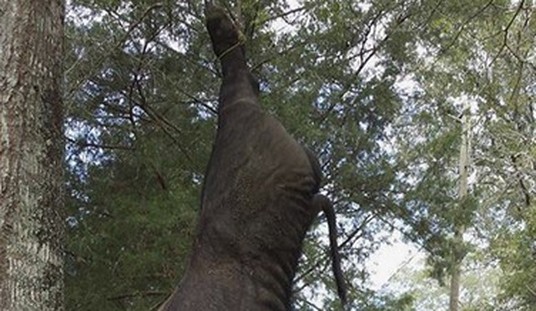That $350 billion went awfully quick.
The fact that Mnuchin and Pelosi are already discussing another $250 billion, doubtless with more tranches of funding to come over the next several months, reveals how silly the “when do we reopen?” debate is fundamentally. Especially the part about whether Trump or the governors have the final say. The people have the final say, notes Michael Brendan Dougherty. Trump could authorize every business in America to reopen for business on May 1 and dismal consumer demand among Americans too frightened to go out would mean that small outfits will continue to need help from Uncle Sam into the summer, and probably the fall, and probably the winter, to keep the lights on. Formally they’ll be open. Functionally they may be operating in the red indefinitely, on the precipice of bankruptcy while the feds try to keep them afloat.
We’re having a hard discussion right now about how many deaths are acceptable in the name of restoring some vitality to the economy. We’re going to end up having another hard discussion eventually about how many businesses should be allowed to fail in the name of somewhat containing our debt supernova. Especially since not every “small business” availing itself of this program is a small business.
Negotiations between Congress and the White House resumed Wednesday over replenishing the small-business loan program designed to support businesses hit by the coronavirus pandemic. The Paycheck Protection Program was on track to exhaust its initial allocation of $350 billion later in the day. As of Wednesday morning, the Small Business Administration said it had approved about 1.3 million applications, totaling more than $289 billion in loans…
Both Democrats and Republicans want to add $250 billion to the small-business aid program, but have been sparring for days over whether to add restrictions to the funds. Democrats want to expand access to the loans as well as include more money for hospitals, food assistance and state and local governments. Republicans, meanwhile, said they want to keep the bill focused on increasing small-business aid and defer other funding debates until the next, broader legislation is crafted.
Given that (a) Congress will need to act repeatedly during the next few months to keep relief programs funded and (b) it’s highly dangerous for Congress’s many geriatric members to be congregating right now, there’s talk of a new resolution calling on leaders in both chambers to come up with a plan for remote voting. Which these idiots obviously — obviously — should have done weeks ago, when this problem was already painfully foreseeable.
How bad is it out there for American businesses? See for yourself:

That’s the biggest monthly drop in retail sales since the feds first started tracking them in 1992. Data like that combined with tomorrow morning’s new round of horrendous unemployment numbers is going to give Trump a boost in his call to reopen on May 1, I think. That was a hard sell to the public over the past few weeks as the situation in New York deteriorated. Now that New York is seeing some improvement, Americans will begin paying more attention to the country’s economic calamity. The supply side will begin spoiling to get back to work.
All they need to do is convince the demand side to show up. That’ll be harder. Charles Fain Lehman published a piece at the Free Beacon this morning noting how consumer demand for things like restaurants and airline tickets began collapsing even before lockdown orders started being issued. To hear the president talk sometimes, you’d come away thinking that Americans are ready to burst through the doors of their local mall if only these stubborn blue-state governors would give the signal. It’s just not true. Even if you don’t trust polling showing how reluctant people are to visit confined spaces for nonessential activities like eating out, the hard data from apps like OpenTable (which allows users to make restaurant reservations) proves that demand was collapsing before stay-at-home orders were issued. “On the day before closure orders, the median state had seen reservations fall by a whopping 73 percent,” Lehman notes. “In some states, like Michigan and Georgia, reservations had already fully stopped before restaurants were officially closed. In short, patrons did not need the government to tell them to before they stopped eating out.”
Some demand will return immediately after businesses reopen. More might return — gradually — if new cases of COVID-19 rise slowly, thanks to diligent government preparations to contain the next outbreak. But those preparations aren’t yet in place. And even if they were, it’s an open question how effective they’d be in holding down infections to a point where Americans would feel it’s worth the risk of spending a few hours in a community dining room for the privilege of eating some professionally made food. Restaurants will try to assuage their fears by spreading out tables to allow for more distance between diners, but will that be enough? A new (small) study from China suggests maybe not:
A study of 10 coronavirus cases from three families who dined at the same restaurant in southern China has suggested that air conditioning aided droplet transmission between them…
The first patient of the 10 cases studied in Guangzhou had on January 23 returned from Wuhan, where the coronavirus was first reported in December.
The person had lunch with three family members the next day at a windowless restaurant with an air conditioner on each floor…
Two other families sat at neighbouring tables, with about one metre between each and an overlap in dining time of about an hour, the report said.
Would two meters of separation have kept the other families safe? Who wants to risk it?
It’s hard to fathom Americans gradually reopening for business, holding infections down over the summer as confidence in commerce is restored, and then locking down again if there’s a spike in cases in the fall. Many people will want to say “to hell with it” and maintain the status quo throughout a second wave. Whether or not there’s widespread support for that, though, may depend on the state of Sweden’s outbreak at the time (assuming they stick with their “herd immunity” strategy all the way to the end of the epidemic). If the death toll in Sweden is lower than the worst fears right now, that’ll be evidence that maybe we should just plow ahead. But don’t get your hopes up. A new model published today projects that the Swedish health-care system will be overwhelmed 40 times over — no typo — with the median number of projected deaths coming in at 96,000 people, a staggering toll relative to Sweden’s population. That’d be equivalent to about three million Americans. I hope they know what they’re doing.







